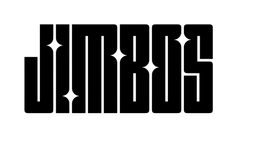How to Remove Salt Stains from Your Car’s Carpet and Mats
Salt may protect roads, but it’s brutal on your interior. Let’s get those white, crusty stains out of your carpets and mats the right way — without wrecking your fabric.
Why Salt Is So Damaging
Salt dries into hard crystals that stiffen carpet fibers and create permanent stains. Left untreated, it also pulls moisture from the air — leading to mildew, odors, and corrosion on interior floor pans.
What You’ll Need
- Complete Cabin Cleaner
- Scrub Buddy Pad
- Everyday Microfiber Towels
- Spray bottle with warm distilled water (optional)
Step-by-Step Salt Stain Removal
Step 1: Pre-Treat with Warm Water
Lightly spray the salt-stained area with warm water to loosen the salt crystals. Don’t soak it — just enough to soften the crust.
Step 2: Apply Complete Cabin Cleaner
Spray Complete Cabin Cleaner directly onto the area. Let it dwell for 30 seconds to break down salt and grime.
Step 3: Agitate with a Scrub Buddy Pad
Gently scrub the area using a Scrub Buddy Pad. Use short, back-and-forth motions to lift the salt from the carpet fibers.
Step 4: Blot and Wipe Clean
Use an Everyday Microfiber Towel to blot the area dry. Avoid rubbing — blotting helps lift salt without pushing it deeper into the carpet.
Step 5: Let Dry and Inspect
Allow the area to air dry. If you still see salt residue, repeat the process one more time.
Pro Tip: Keep It from Coming Back
Use rubber floor mats during winter and vacuum weekly. After every snowstorm, check for buildup in corners and under the pedals.
Related Posts
- Winter Car Interior Maintenance Checklist
- Prep Your Car Interior for Spring
- How to Remove Winter Odors from Your Car
FAQs
What’s the best cleaner for salt stains in a car?
A dedicated interior cleaner like Complete Cabin Cleaner works best. Avoid vinegar or baking soda — they can damage fabric and leave residue.
Will salt stains go away on their own?
No — they harden and get worse over time. You need to dissolve and extract them to prevent permanent discoloration and smell.
Can I use this method on cloth seats?
Yes — just use lighter agitation with a softer pad. Always blot dry and avoid oversaturation.



